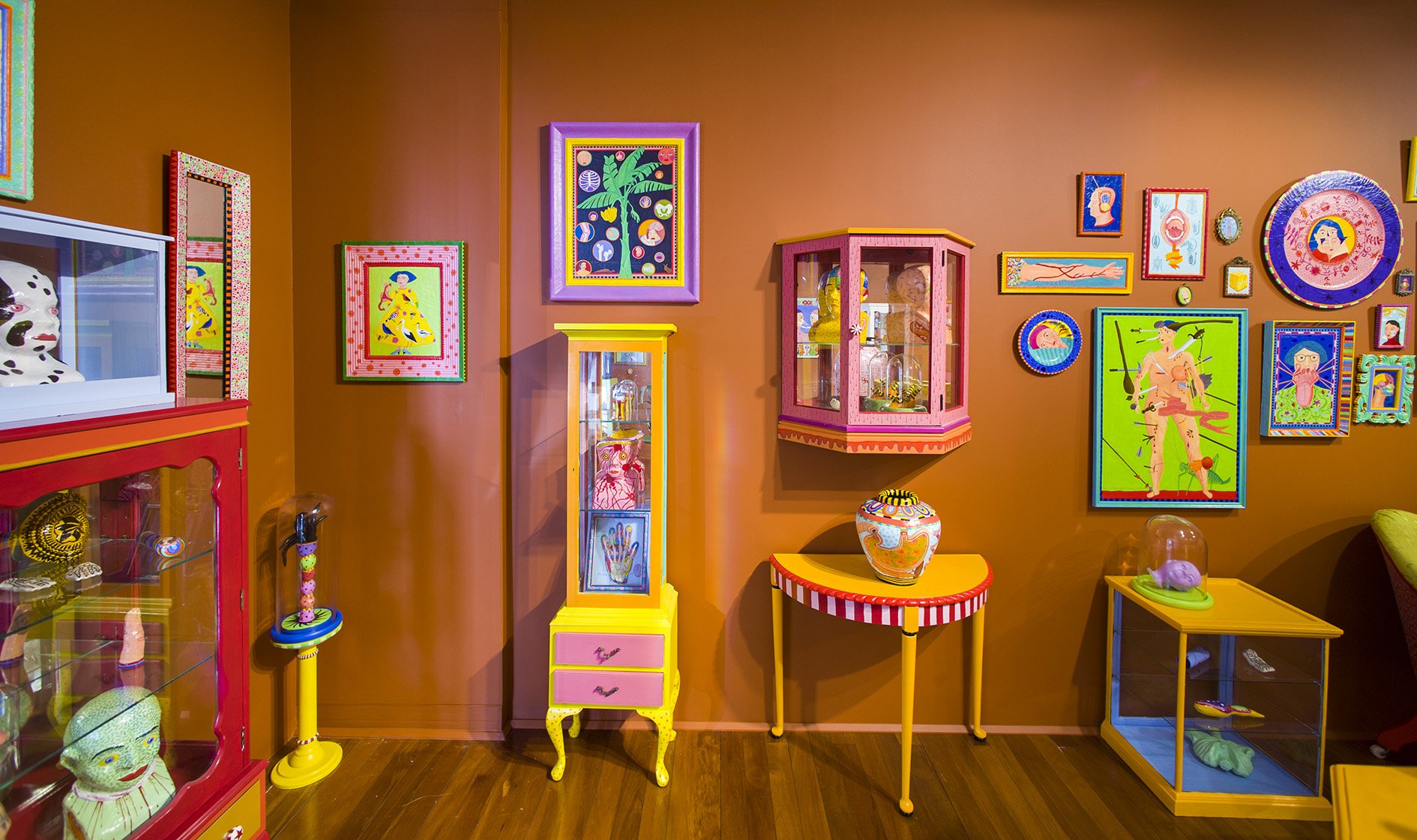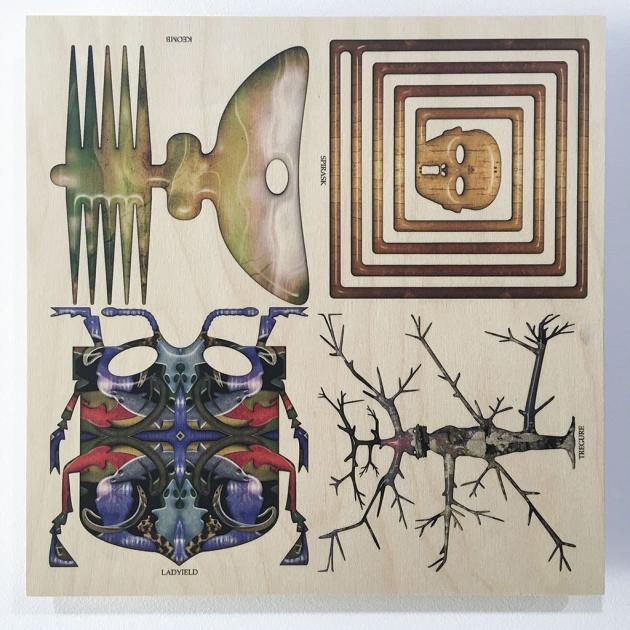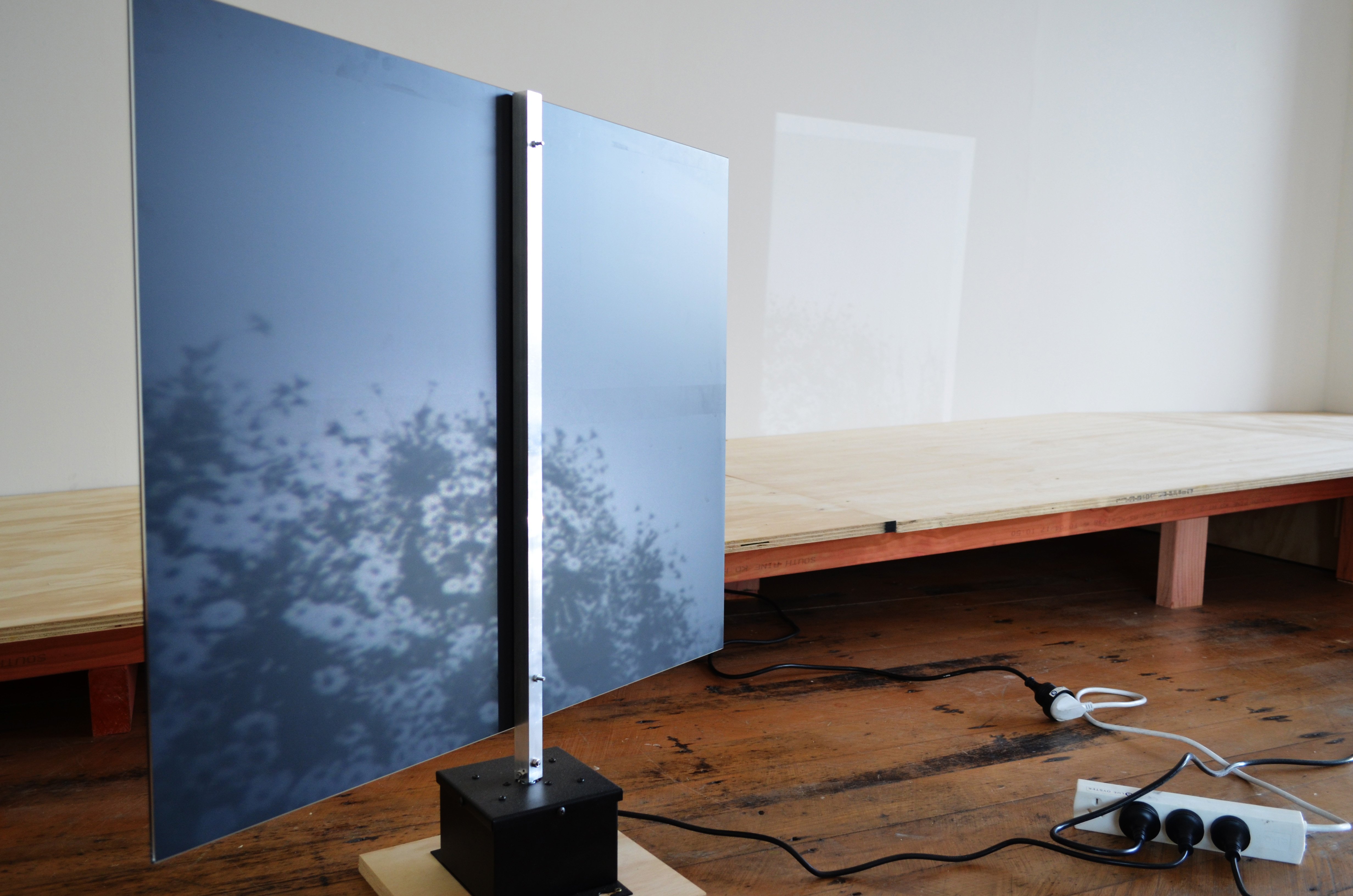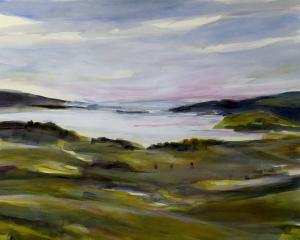In this week's Art Seen, Robyn Maree Pickens looks at exhibitions by Nicola Jackson, Richard Killeen, Lucy Meyle and Ziggy Lever.
 The Bloggs 2017, by Nicola Jackson.
‘‘The Bloggs’’, Nicola Jackson (Dunedin Public Art Gallery)
The Bloggs 2017, by Nicola Jackson.
‘‘The Bloggs’’, Nicola Jackson (Dunedin Public Art Gallery)

If Gabriel Garcia Marquez were a maker of objects, this is the exhibition he might present: ''The Bloggs'' is three-dimensional magic realism. It is the type of exhibition in which the unexpected is most certainly expected, and where more is definitely more. That is, it gains by excess and accretion.
In the small BNZ gallery of the Dunedin Public Art Gallery, against tan painted walls, local artist Nicola Jackson has made and arranged a most pleasing and engaging surfeit of brilliant colour, and finely rendered, faux-naive paintings on two and three-dimensional surfaces of the human body, as if viewed by a surgeon. Jackson presents the body laid bare, the body under X-ray, the body beneath the epidermis.
While there is one complete body painted in anatomical sketch on to a raised wooden bed, The Bloggs body is primarily fragmented into pieces. It is parcelled under glass domes, into vitrines and cabinets, and shut into picture frames.
There are allusions to Frida Kahlo, to the Mexican Dia de los Muertos (Day of the Dead), to battered medieval saints, and to artefacts of preservation (vitrines) and concealment, such as masks. Jackson quite literally peels back the viscera of the human form to perhaps celebrate the similarity that undergirds our proliferate diversity. Not to be missed.
 Database L 2017, by Richard Killeen.
‘‘Databases I, J and L’’, Richard Killeen (Brett McDowell Gallery)
Database L 2017, by Richard Killeen.
‘‘Databases I, J and L’’, Richard Killeen (Brett McDowell Gallery)

As the title, ''Databases I, J and L'', suggests, and the exhibition elaborates, this latest body of work from Richard Killeen appears to come from a vast archive of Borgesian proportions. It is as if (and to all accounts he has) Killeen has archives of archives, or databases of databases.
Evident in this exhibition are multiple knowledge strands encompassing disciplines of language, entomology, biology, zoology, engineering, geometry, psychoanalysis, anthropology and Egyptology.
Aspects, generally two, of these various disciplines are combined in such a way as to create a new object that is simultaneously recognisable in the original and as a newly merged artefact. In one instance, a geometric enclosure spirals around an eyeless mask in ever-increasing gradations. Beneath the new artefact is the word SPIRASK: a (geometric) spiral and a mask.
Each work contains a regular number of unique, merged artefacts organised in strict precision along an invisible grid that follows a 2 x 2, 4 x 4, or 6 x 6 constraint. That is, each work comprises four, eight or 12 different merged artefacts of the same size that are positioned in an ''all over'' composition that dominates the plywood substrate. Digital technology enhances Killeen's ability to combine and produce finely detailed images that are printed on to ply. Killeen continues to impress.
 Looking Forwards and Backwards 2017, by Lucy Meyle and Ziggy Lever.
‘‘Looking Forwards and Backwards’’, Lucy Meyle, Ziggy Lever (Blue Oyster Art Project Space)
Looking Forwards and Backwards 2017, by Lucy Meyle and Ziggy Lever.
‘‘Looking Forwards and Backwards’’, Lucy Meyle, Ziggy Lever (Blue Oyster Art Project Space)

The exhibition ''Looking Forwards and Backwards'' is an active meditation on collaboration, participatory practice, and the formation of subjectivity that occurs in the interstices, the in-between spaces, at threshold moments in artistic processes. While stemming from Meyle and Lever's collaborative practice, the exhibition is based on an email conversation between the two - it also looks out towards the visitor, inviting them to be part of an open-ended conversation.
The exhibition extends this invitation by creating tension between a solid, stationary, height-graduated plywood platform that runs around the inner circumference of the main gallery space, and a mobile image projected on two rotating mirrors. The visitor is invited, as it were, to interact with fleeting glimpses of the refracted image on the gallery walls (or reflected between the two mirrors) by walking around the platforms.
The refracted image is of two flower bushes of asters (like daisies) sourced from the Hocken library that depicts the flowers touching/not-quite-touching. The visitor's perambulations on the plywood platforms play out this dynamic of meeting/not-quite-meeting that not only characterises artistic collaborations but also describes everyday (and global) interactive experiences.
The contemplative space created by the artists in the back gallery offers visitors the opportunity to read their email correspondence and listen to sound works.
-By Robyn Maree Pickens











